How do I monetize my fitness app? (25 Ways)
To monetize a fitness app effectively, you need more than just workouts—you need a complete fitness app monetization strategy that supports subscriptions, one-time program sales, upsells, and premium content.

Popular monetization strategies for fitness apps include monthly memberships, tiered access, pay-per-program options, digital product sales, affiliate offers, and branded partnerships. Whether you’re launching a gym app or trying to build a fitness app as a creator, choosing the best way to monetize your gym app starts with understanding your audience and their goals.
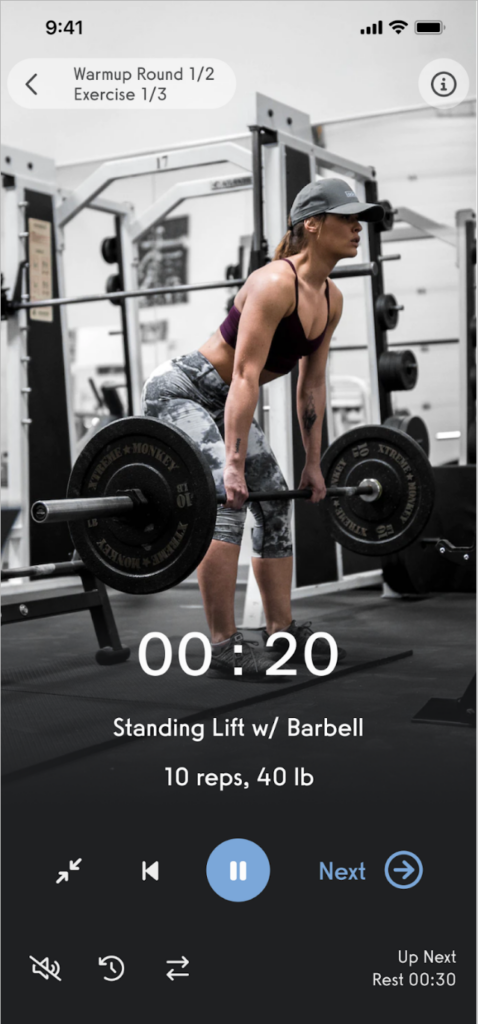
Many fitness professionals know how to make a fitness app—or at least how to create a fitness app with no-code tools—but struggle with monetization. Free content can attract users, but without the right funnel, it doesn’t convert. The biggest mistake? Launching without a clear workout app monetization strategy in place. Whether you’re building a virtual coaching app or creating a fitness app for your gym, without a plan, it’s tough to scale revenue. Gym owners and influencers alike ask, “How do I monetize my app?” or “What’s the best gym app monetization model?”—but face challenges around pricing, upselling, and integrating payment systems.
That’s where Exercise.com delivers. Our platform helps you build your own fitness app with built-in monetization features—sell one-time programs, offer recurring subscriptions, create upsell flows, and even bundle digital products with training services. From fitness monetization to membership management to online coaching sales, Exercise.com is your complete monetization solution. If you’re exploring monetization strategies for health apps or looking for the best fitness app monetization strategies that actually scale, we’ve got you covered.
| Strategy | Description | Exercise.com Advantage |
|---|---|---|
| Subscription Model | Charge recurring fees for premium features (e.g., personalized plans, live classes, analytics). | Built-in subscription management with automated billing and tiered pricing options. |
| Freemium Model | Offer basic features for free, with premium upgrades (e.g., advanced workouts, nutrition plans). | Customizable paywalls to unlock premium content, fostering user conversion without coding. |
| In-App Purchases | Sell one-time digital products (e.g., workout bundles, meal plans, fitness challenges). | Integrated e-commerce tools to sell plans, challenges, and merchandise directly through your branded app. |
| Advertising & Sponsorships | Display ads or partner with brands for sponsored content (e.g., workout gear, supplements). | Seamless ad integration and sponsorship management without disrupting user experience. |
| Affiliate Marketing | Earn commissions by promoting third-party products (e.g., fitness equipment, supplements). | Track affiliate sales and integrate promotions into workout plans or challenges. |
| Virtual Coaching | Offer paid one-on-one or group coaching sessions via live video or messaging. | Schedule sessions, manage payments, and track client progress through a unified platform. |
| Fitness Challenges | Monetize challenges with entry fees or sponsor partnerships (e.g., “30-Day Shred Challenge”). | Create and manage challenges with leaderboards, rewards, and automated tracking. |
| Merchandise Sales | Sell branded apparel, equipment, or accessories through the app. | Built-in e-commerce tools to manage inventory, payments, and promotions. |
| Corporate Wellness Programs | Partner with companies to provide employee fitness programs. | Deliver tailored wellness content and track participation through your app. |
| Gamification | Incentivize engagement with badges, streaks, and rewards for completing workouts. | Pre-built gamification features like leaderboards and achievement badges to boost retention. |
Exercise.com simplifies how to make a fitness app by offering an all-in-one platform to build a fitness app with monetization strategies for fitness apps seamlessly integrated. Unlike traditional app development, which requires costly coding and months of work, Exercise.com provides:
- Pre-built monetization tools: Subscription models, in-app purchases, and affiliate marketing are ready to deploy.
- Custom branding: Create a gym app monetization strategy with a branded app that reflects your business identity.
- Scalability: Add features like virtual coaching or corporate wellness programs as your audience grows.
- Cost efficiency: Avoid upfront development costs (often $50,000–$600,000+) with a subscription-based platform.
For example, the best way to monetize gym app platforms often combines subscriptions, challenges, and merchandise sales—all achievable through Exercise.com’s unified system. Whether creating a fitness app for personal trainers, gyms, or influencers, Exercise.com ensures workout app monetization strategy success by streamlining operations and maximizing revenue streams.
Fitness app monetization strategies like subscriptions, freemium models, and in-app purchases are essential for generating revenue. Exercise.com empowers fitness businesses to make your own fitness app with built-in tools for monetization strategies for health apps, reducing development time and costs. By leveraging its customizable features, brands can focus on engagement and growth while Exercise.com handles the technical complexities of gym app monetization and fitness monetization.
If you’re wondering how to monetize your fitness app, there are numerous avenues to explore. With Exercise.com, you can sell workout plans, offer online coaching, run fitness challenges, and more—all within your custom-branded fitness app.
Want to create your own custom branded fitness app?
As the fitness industry grows, so does the popularity of fitness apps. With the rise of wearable technology, tracking and monitoring daily workouts and personal health is easier than ever before. However, creating a successful fitness app isn’t just about providing useful features. It’s also about monetizing the fitness app. In this article, we’ll explore various ways to monetize your fitness app and make it a profitable venture.
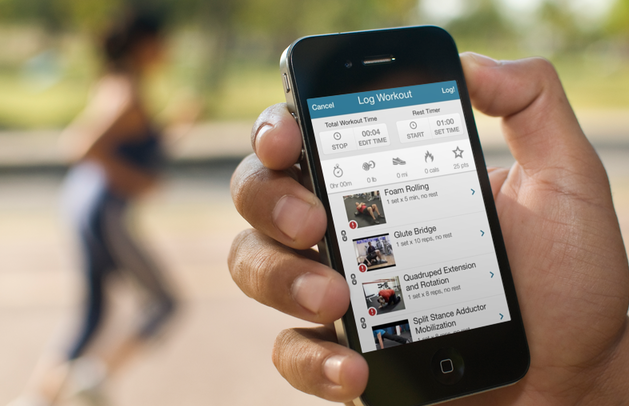
List of Ways to Monetize a Fitness App
Creating a successful fitness app involves not just a well-designed, user-friendly app, but also a sound strategy for monetization. Here are 25 ways to monetize a fitness app, all of which can be made easier with Exercise.com’s versatile best fitness app builder software platform:
- Subscription-Based Services: Exercise.com supports recurring membership fees for continued access to your app and its content.
- One-Time Purchase Workout Plans: Sell workout plans as individual purchases.
- Fitness Classes: Charge for access to online fitness classes or personal training sessions.
- Personal Training Packages: Sell blocks of personal training sessions for a set fee.
- Ecommerce Shop: Sell physical products, such as workout gear or supplements, directly from your app.
- In-app Purchases: Offer premium content or features for an additional cost.
- Advertising: Host sponsored content or display advertisements from relevant businesses.
- Sponsored Challenges: Create fitness challenges sponsored by other businesses.
- Nutrition Plans: Sell personalized nutrition plans alongside your workout content.
- Affiliate Marketing: Recommend products and earn a commission on any sales made through your app.
- Virtual Coaching: Charge a fee for personalized, one-on-one virtual coaching.
- Premium Subscriptions: Offer an upgraded subscription level with additional perks.
- Masterclasses: Host in-depth classes or workshops on a specific fitness topic for a fee.
- Diet and Meal Prep Guides: Sell guides for healthy eating and meal preparation.
- Brand Partnerships: Partner with other brands for joint marketing efforts.
- Certification Programs: Offer specialized training or certification programs for a fee.
- Exclusive Community Access: Charge for access to a members-only online community.
- Paid Fitness Events: Host virtual fitness events or webinars that attendees pay to join.
- Donations: Accept donations from satisfied users who wish to support your platform.
- Data Monetization: With user consent, anonymized data can be sold to market researchers.
- Webinars and Seminars: Sell tickets for online educational fitness webinars.
- Health and Fitness eBooks: Write and sell your own eBooks on relevant topics.
- Rent Ad Space: If you have a high traffic volume, you can rent ad space in your app.
- Sell Workout Equipment: If you recommend specific equipment in your workouts, consider selling those items directly.
- Licensed Content: License your fitness content to other platforms or businesses.
Exercise.com’s platform provides the flexibility to incorporate any and all of these monetization strategies into your fitness app, allowing you to create a profitable business that suits your specific needs.
Exercise.com is the best fitness app builder software for fitness professionals who want a low cost and affordable custom branded fitness app. Exercise.com allows fitness professionals to have full control over their brand and learn how to make a fitness app quickly and easily, while ensuring a personalized and consistent experience for their clients. See how you can build different types of fitness apps based on your market and need.
Exercise.com is a comprehensive platform with the best fitness software for influencers, the best personal training software, and the best gym management software so no matter what type of fitness business you have, it simplifies the process and amplifies your earning potential while also helping you run fitness challenges, create online workout groups, do fitness livestreaming, do in-person and online training, and more, all through your own custom-branded fitness apps. With its ability to create, market, and sell personalized workout plans to a vast audience, Exercise.com can help transform your fitness passion into a lucrative online fitness business.
Read More:
- Best Fitness App Development Companies
- Fitness App Statistics
- Best Personal Trainer App Builder Software
- Best Personal Trainer Client Tracking Apps

Want to create your own custom branded fitness apps? Get a demo now!
Read More:
- Custom Branded Fitness Apps
- Best Fitness Mobile App Creation Software
- Best Fitness Influencer Apps
- How do I monetize my fitness journey?
Understanding the fitness app market
The first step in monetizing your fitness app is to understand the market. There are a host of players in the fitness app industry, ranging from behemoths like Fitbit and Nike, to smaller players like MyFitnessPal and 7 Minute Workout. But what sets these apps apart?
When it comes to fitness apps, there are a few key features that users look for. One of the most important is ease of use. Users want an app that is intuitive and easy to navigate, with clear instructions and helpful guidance. Another important feature is customization. Users want an app that can be tailored to their individual needs and preferences, whether that means setting personalized goals or tracking specific types of workouts.
Key players in the fitness app industry
While there are many players in the market, there are a few key players that dominate the industry. Fitbit, with its range of wearable technology, is one of the most popular fitness apps. The Fitbit app allows users to track their daily activity, including steps taken, calories burned, and distance traveled. It also offers personalized coaching and guidance, as well as social features that allow users to connect with friends and share their progress.
Nike’s Training Club app is another popular option, with its range of workouts and training programs. The app offers a variety of workouts, ranging from strength training to yoga, and allows users to track their progress and set personalized goals. It also includes a social component, with the ability to connect with friends and share workouts.
MyFitnessPal, on the other hand, is more focused on tracking nutrition and calorie intake. The app allows users to log their meals and snacks, and provides detailed information on the nutritional content of each item. It also offers personalized recommendations and goal setting, as well as the ability to connect with friends for added motivation and support.
Target audience for fitness apps
Before you can monetize your app, it’s important to know your target audience. Fitness apps appeal to a wide range of users, from casual gym-goers to hardcore fitness enthusiasts. Your target audience may also vary depending on the type of app you offer. For example, a yoga app may appeal to a different audience than a weightlifting app.
In general, fitness app users are looking for an app that can help them achieve their fitness goals in a way that is convenient and effective. They want an app that is easy to use and offers personalized guidance and support. They may also be looking for social features that allow them to connect with like-minded individuals and share their progress.
Current trends in fitness app monetization
There are a variety of monetization models in the app industry. Some popular trends include subscription-based models and in-app purchases, while others rely on advertising and sponsorships. Understanding these models can help you choose the best approach for your app.
Subscription-based models are becoming increasingly popular in the fitness app industry. These models allow users to access premium features and content for a monthly or yearly fee. This can include personalized coaching, customized workouts, and advanced tracking and analytics.
In-app purchases are another popular monetization model. These allow users to purchase additional features or content within the app, such as premium workouts or nutritional plans. This can be a good option for users who are not ready to commit to a subscription, but still want access to additional content.
Finally, some fitness apps rely on advertising and sponsorships to generate revenue. This can include sponsored content or partnerships with fitness brands. While this model may not generate as much revenue as subscription-based or in-app purchase models, it can still be a viable option for some apps.
Choosing the right monetization model
Monetizing your app is one of the most important aspects of app development. It is essential to choose the right model to ensure that your app generates revenue and is sustainable in the long run. Here are some popular options:
Subscription-based model
A subscription-based model charges users a recurring fee to access premium features. This can be a great option for apps that offer a lot of content. For example, music streaming apps like Spotify and Apple Music offer users access to millions of songs for a monthly fee. This model ensures a steady stream of revenue for the app developer and provides users with an incentive to continue using the app.
In-app purchases
In-app purchases allow users to purchase additional features or content within the app. This can be a great option for apps that offer a wide range of per-item features or content. For example, gaming apps often offer users the option to purchase additional lives, power-ups, or virtual currency. This model allows users to customize their experience within the app and provides app developers with a way to generate revenue beyond the initial download.
Advertising and sponsorships
Advertising and sponsorships involve accepting payment from companies to display ads or promote products within your app. This can be a great option for apps with a large user base. For example, social media apps like Facebook and Instagram display ads to users based on their interests and browsing history. This model allows app developers to generate revenue without charging users directly and provides companies with a way to reach a targeted audience.
Freemium model
A freemium model offers basic features for free, but charges for premium features. This can be a great option for apps that offer a lot of content. For example, productivity apps like Evernote offer users a basic version of the app for free, but charge for premium features like offline access and additional storage. This model allows users to try the app before committing to a purchase and provides app developers with a way to generate revenue from users who find the app valuable.
Paid app model
A paid app model charges users upfront to download the app. This can be a great option for apps with a loyal following. For example, popular meditation app Headspace charges users a monthly fee to access its content, but also offers a one-time purchase option for users who prefer to pay upfront. This model ensures that app developers receive revenue from every download and provides users with an ad-free experience.
Affiliate marketing and partnerships
Affiliate marketing and partnerships involve partnering with other companies to earn a commission on sales made through your app. This can be a great option for apps that are niche or offer a unique audience. For example, fitness apps like MyFitnessPal partner with companies that sell health and wellness products to offer users exclusive deals and discounts. This model allows app developers to generate revenue while providing users with valuable offers and promotions.
Read More: How do I monetize my fitness app?
Implementing in-app purchases
In-app purchases can be a lucrative way to monetize your app. By offering users the ability to purchase additional content, features, or functionality within the app, you can generate revenue and keep your users engaged.
However, implementing in-app purchases requires careful consideration and planning. Here’s what you need to know:
Types of in-app purchases
There are a variety of in-app purchases available, each with its own benefits and drawbacks. Some of the most popular include:
- Subscriptions: Users pay a recurring fee to access content or features on an ongoing basis. This can be a good option for apps that offer regularly updated content or services.
- One-time purchases: Users pay a single fee to unlock a specific piece of content or feature. This can be a good option for apps that offer premium content or features that are not available to all users.
- Consumable purchases: Users pay for a specific item or service that can be used up or depleted over time. This can be a good option for apps that offer virtual goods or premium features that users can purchase as needed.
Best practices for offering in-app purchases
When implementing in-app purchases, it’s important to follow best practices to ensure a positive user experience. This includes:
- Offering clear descriptions: Make sure users understand exactly what they are purchasing and what they will receive in exchange for their payment.
- Avoiding misleading or deceptive pricing practices: Be transparent about pricing and avoid tactics that could be perceived as deceptive or unfair.
- Making it easy for users to manage their purchases: Provide clear and easy-to-use tools for users to manage their in-app purchases, such as the ability to cancel subscriptions or view purchase history.
Pricing strategies for in-app purchases
When pricing your in-app purchases, it’s important to offer value to the user. This could mean:
- Offering discounts for larger purchases: Encourage users to make larger purchases by offering discounts for buying in bulk.
- Bundling items together at a reduced price: Offer users a discount for purchasing multiple items or features together as a package.
It’s also important to consider the competition and offer pricing that’s competitive and fair. Research similar apps and determine what they are charging for in-app purchases to ensure that your pricing is in line with industry standards.
Improve Your Fitness App Monetization
Monetizing your fitness app is key to making it a profitable venture. Understanding the market, identifying your target audience, and choosing the right monetization model are all important steps to success. Whether you opt for in-app purchases, paid subscriptions, or advertising, offering value to your customers is key to success.
How to Create a Fitness App
Let’s get right to some practical ways that you can create your own affordable fitness apps with the Exercise.com white labeled fitness app software tools. With the Exercise.com platform you have a number of options to run a comprehensive online fitness experience for your community, all custom branded with your own fitness branding. You can sell workout plans, run fitness challenges, offer access (paid) to an online workout group, you can sell online training sessions, sell a membership to your own custom branded fitness app, offer mobile workout logging in your own workout apps, and much more. Here are some easy things you can do with the Exercise.com software platform.
Use the Exercise.com workout plan creator to create your workout plans.

Then mark them for sale online so you can sell workout plans easily and quickly.
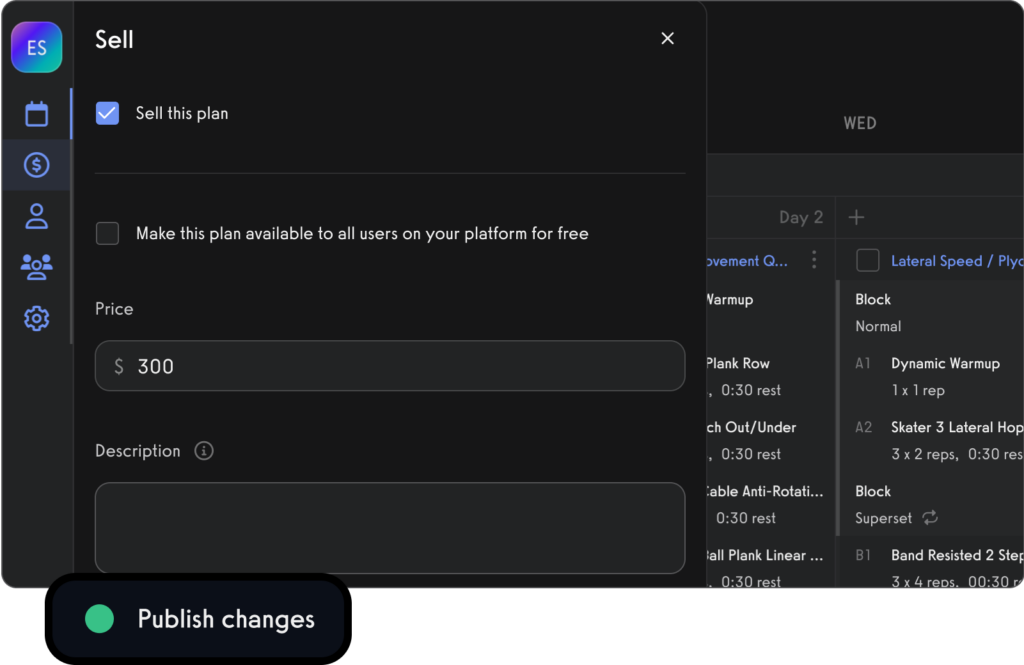
Publish your custom branded fitness apps so you can offer a premium workout logging experience to your community.

Your fitness followers will be able to search your name in the App Store and Google Play Store and then download your fitness app (no more instructing your followers to search for some other company’s name—start building your own fitness brand with your very own custom-branded fitness app!) Not sure what to name your fitness app? Read our big list of fitness app name ideas.
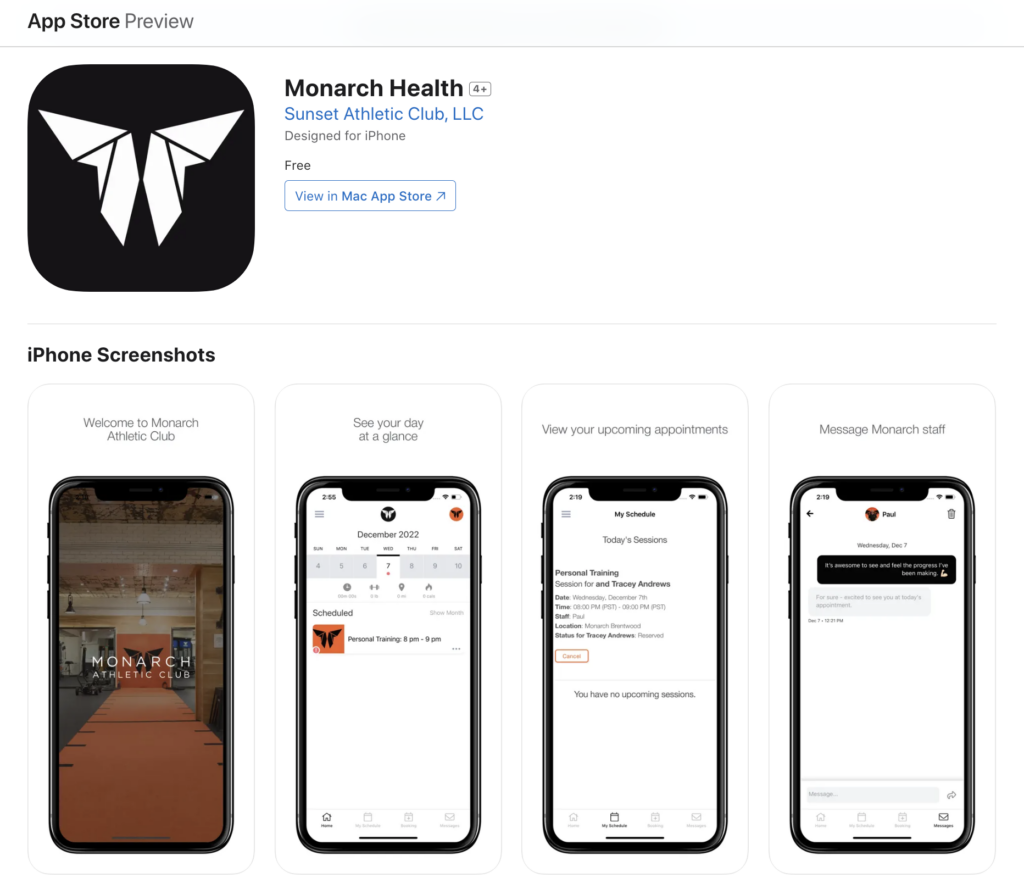
Your community can open up your fitness app and view their daily journal to log workouts, watch fitness videos, complete their daily habits, and more.
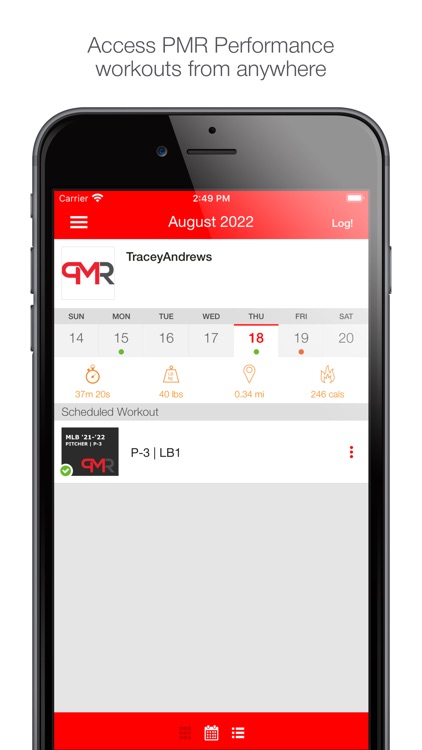
Create your own exercise demonstration videos or use the Exercise.com exercise video library to create a professional workout logging experience that your community will love and be happy to pay for (no more emailing around cobbled together PDF documents that people will just copy and share). Charge real money for a top notch fitness app that you will feel good about.

You can send messages to your community with email, SMS, and in-app messaging right inside of your own custom branded fitness apps, and you can even set up powerful fitness marketing automations to send messages automatically based on key triggers.
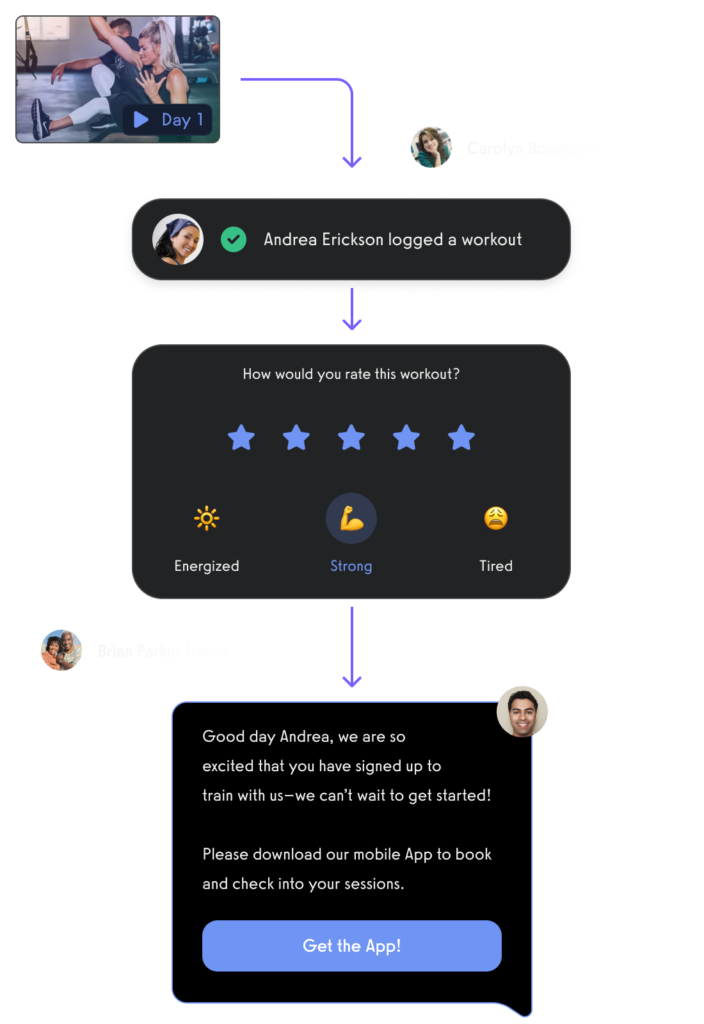
You can easily run your own virtual fitness challenges.
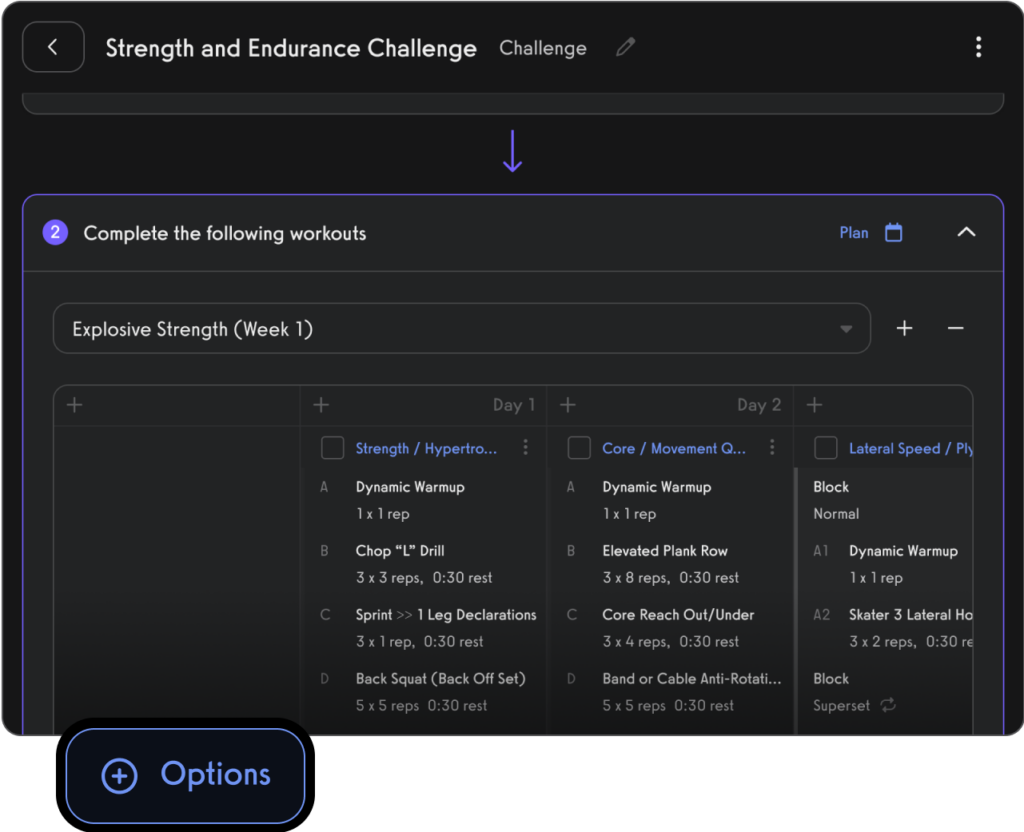
And create online workout groups, do distance training, sell workout plans online, time-release workouts in your apps, offer habit tracking, deliver nutrition guides, and much, much more, all right within your own fitness apps, and branded under your own fitness brand.


Ready to get started? Get a demo now!
Read More:










